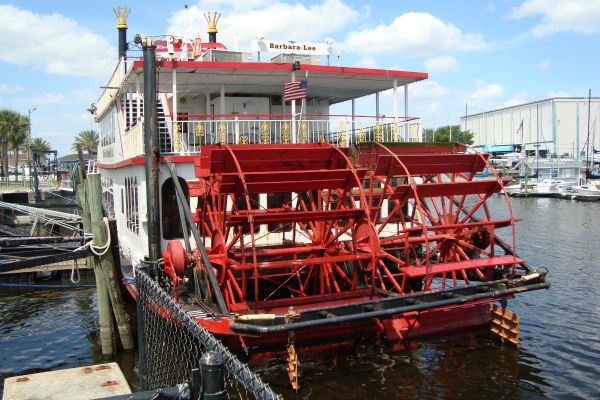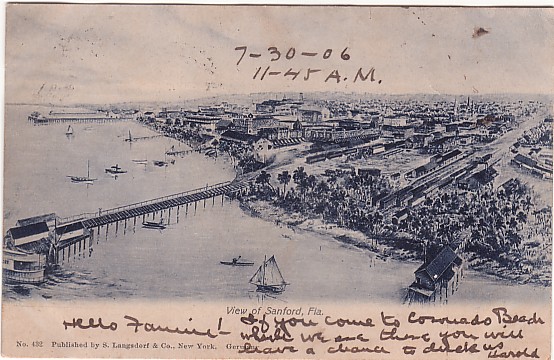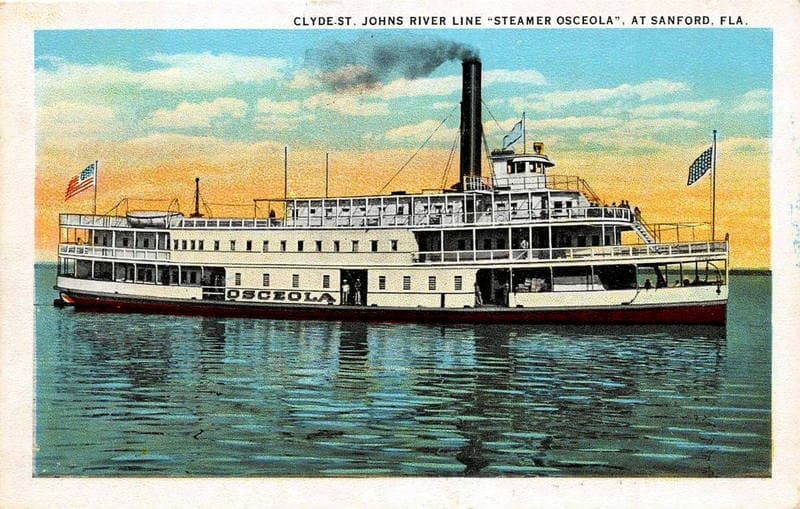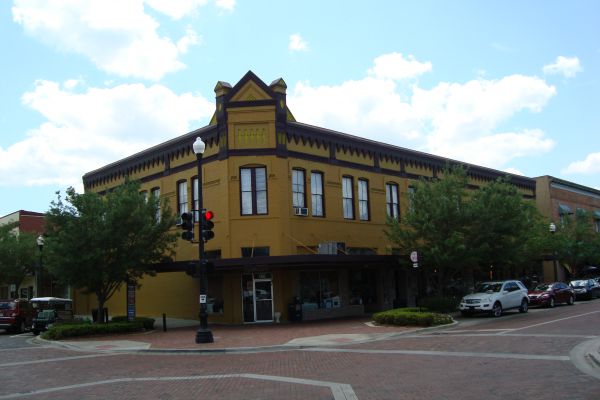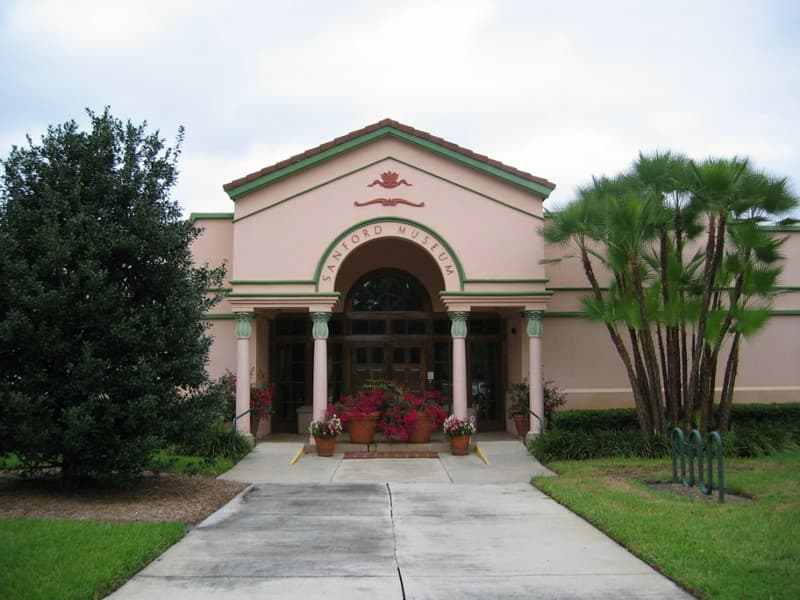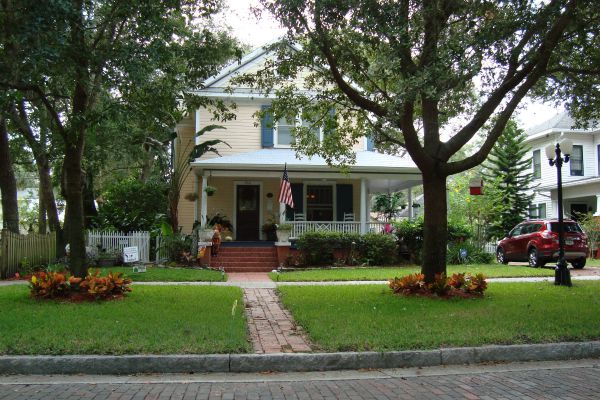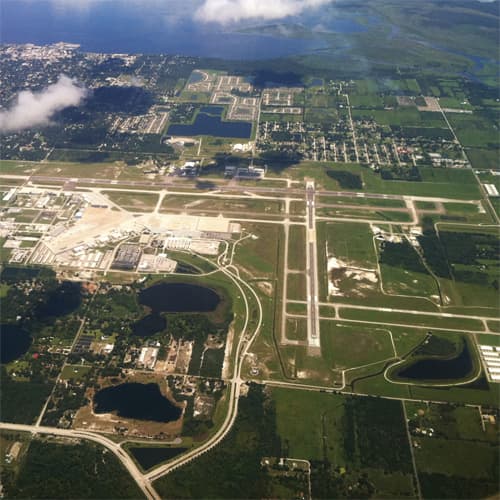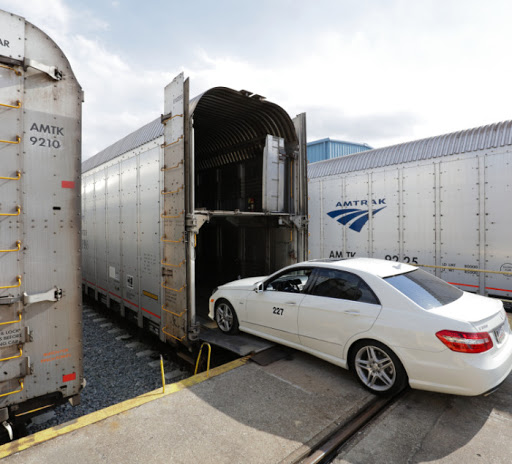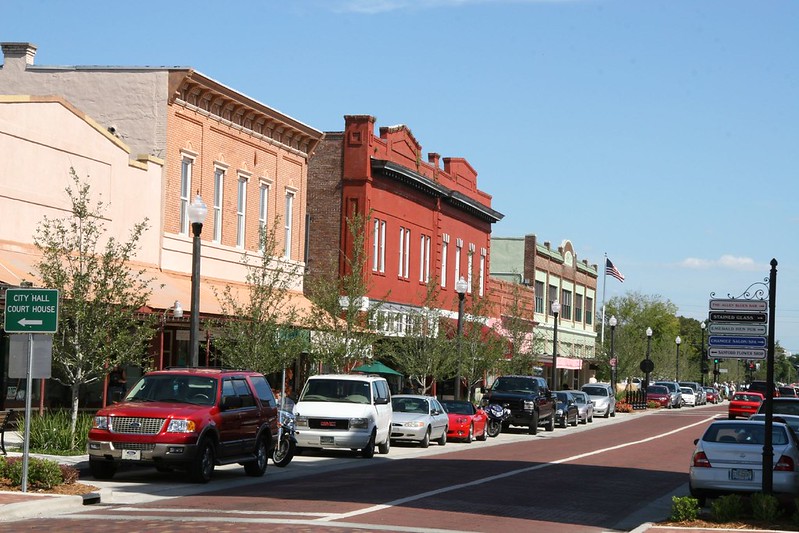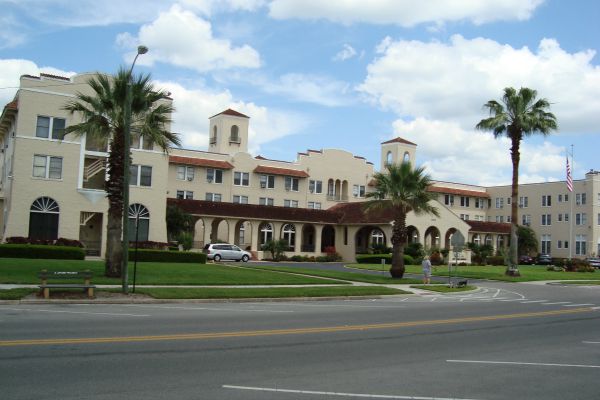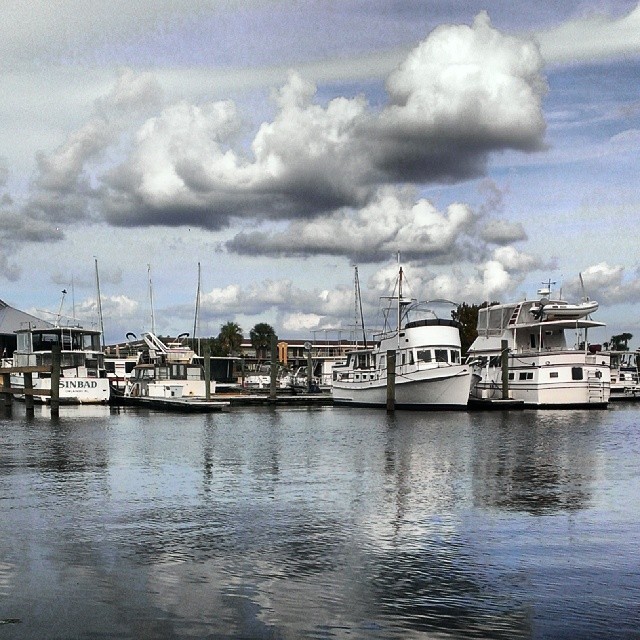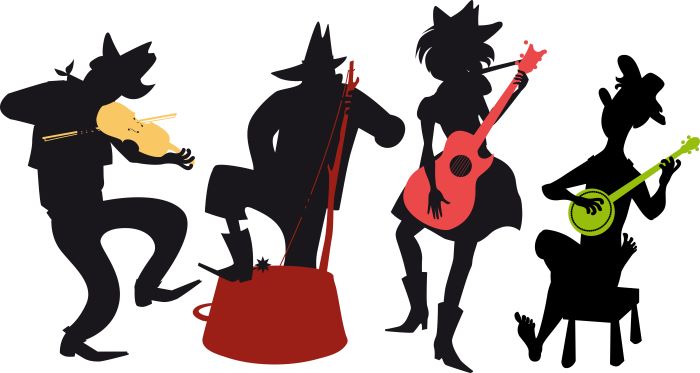- Home
- Florida Towns
- Sanford
SANFORD, FLORIDA
By Mike Miller Updated September 16, 2024
Sanford, Florida Things To Do, Lodging, Dining, & Real Estate At End Of Article
Sanford sometimes gets overlooked in the sprawl of the metropolitan Orlando area, but it is a unique old town on Lake Monroe about 22 miles north of downtown Orlando.
Lake Monroe is one of the wide lakes that are part of the long St. Johns River system that extends all the way north to Jacksonville and the Atlantic Ocean.
The lake has always marked the upstream limit of major navigation on the St Johns.
HISTORY OF SANFORD, FLORIDA
Steamers from Jacksonville and points north had to stop in Sanford or Enterprise on the opposite shore of Lake Monroe because the river gets too shallow as you continue upstream.
Because of its location at the head of navigation of this major river, Sanford was known in the very early days as the"Historic Waterfront Gateway City".
The first residents of the area were ancient Native American tribes. After them, the Seminoles arrived in the late 1700s and early 1800s.
During the Second Seminole War (1835-1842), the Seminoles burned Palatka, a town on the St Johns River north of Sanford.
The United States Army built Camp Monroe on the south shore of Lake Monroe as a defensive measure.
In 1837 the Seminoles attacked Camp Monroe and the only American casualty was Captain Charles Mellon.
The name of the camp was changed to Fort Mellon and the town that grew up around it was known as Mellonville.
The Army built a road from the fort whose route is still in use in Sanford. It's currently known as Mellonville Avenue.
The area began to grow after the Seminole Wars when it was safe for settlers to set up homes and farms. Orange groves were planted and an orange packing plant was built in 1869.
A year later General Henry Shelton Sanford bought more than 12,000 acres west of Mellonville and laid out a new town he called Sanford.
The first permanent residents of Sanford included many Swedes who were brought in as indentured servants and did the hard work of clearing the land and planting citrus groves.
By 1883, Sanford annexed Mellonville and began to prosper as railroads came to town to supplement the river traffic.
One new railroad connected Sanford to Tampa; another ran north to Jacksonville.
The town was now on the map and this was reinforced in 1883 when President Chester A. Arthur spent a week vacationing in Sanford.
Like many other Florida settlements, Sanford had its growing pains. It was almost totally destroyed by fire in 1887 and the fire was followed by a yellow fever epidemic.
The crowning blow was the destruction of the citrus industry by the Great Freeze of 1894 and 1895. Farmers adapted by turning their groveland into celery farms.
The first celery was planted in 1896 and the celery crops were abundant and became the major industry in town.
When I first came to Florida in 1960, Sanford was known as "The Celery City" and retained that official nickname until 1974.
The industry is still immortalized in the names of some local streets and business establishments along with the many new subdivisions along Celery Road.
SANFORD, FLORIDA TODAY
The City of Sanford today is a modern city with marinas and parks on a bustling waterfront and a downtown area that has been renovated and turned into a vibrant district with many shops and restaurants.
Its residential neighborhoods are shaded by ancient oaks draped in Spanish Moss. Sanford has a strong sense of community and a distinctive identity in busy Central Florida.
The old Naval Air Station from the World War Two era was converted many years ago into Sanford Airport and has since evolved into Orlando Sanford International Airport.
This airport is a major arrival and destination alternative to Orlando International Airport to the south and offers a direct flight to and from many domestic and foreign locations.
The Amtrak auto train route also begins in Sanford where you can put your car on the train and travel north to Lorton, Virginia.
Interstate 4 is on the west side of town and offers a quick jump to Orlando or Daytona Beach.
Many historic commercial buildings and homes in Sanford have been carefully preserved.
An exception is the old Mayfair Hotel which was built in 1925 and became the Sanford Naval Academy in the 1960s and 1970s.
The building then became the home of New Tribes Mission, a missionary group.
Now they are gone and the building is currently vacant. It is on the south shore of Lake Monroe and is starting to show signs of deterioration.
I hope someone comes up with a way of saving it and putting it to good use again. If not, you can probably expect to see a new condominium on the site.
Many people consider it to be one of the most haunted places in Florida.
The marinas along the downtown Sanford waterfront are home to many pleasure boats and also have tour boats for hire.
They also have an excursion type boats that resemble a paddle wheel riverboat that will take you sightseeing or on a dinner cruise.
Another great experience is to visit the Central Florida Zoo and Botanical Gardens. It is located on 166 acres on the west side of Sanford.
The entrance to the zoo is on West Seminole Boulevard, a long drive with a multi-use trail along the pristine waterfront of Lake Monroe.
THINGS TO DO IN SANFORD, FLORIDA
List Generated With Assistance of OpenAI ChatGPT
Sanford Riverwalk (250 W 1st St): Take a leisurely stroll along the scenic Sanford Riverwalk, offering breathtaking views of Lake Monroe, abundant greenery, and opportunities for various recreational activities.
Central Florida Zoo & Botanical Gardens (3755 NW US Hwy 17-92): Immerse yourself in the natural beauty of the Central Florida Zoo & Botanical Gardens, featuring a diverse range of animal species, captivating exhibits, and stunning botanical collections.
Hollerbach's Willow Tree Café (205 E 1st St): Indulge in an authentic Bavarian dining experience at Hollerbach's Willow Tree Café, where you can savor traditional German cuisine, enjoy live music, and soak in the vibrant atmosphere.
Wayne Densch Performing Arts Center (201 Magnolia Ave): Enjoy an evening of cultural entertainment at the Wayne Densch Performing Arts Center, showcasing theater productions, musical concerts, and captivating dance performances.
Fort Mellon Park (600 E 1st St): Relax and embrace the natural beauty of Fort Mellon Park, a waterfront oasis offering fishing spots, picnic areas, walking trails, and stunning views of Lake Monroe.
Historic Downtown Sanford: Wander through the charming streets of Historic Downtown Sanford, home to unique shops, art galleries, restaurants, and bars, providing a delightful blend of history, culture, and vibrant local experiences.
Sanford Museum (520 E 1st St): Dive into Sanford's rich history and culture at the Sanford Museum, housing captivating exhibits, artifacts, and interactive displays that offer insights into the city's past and its significance in Florida's development.
Seminole Towne Center (200 Towne Center Cir): Shop 'til you drop at the Seminole Towne Center, a premier shopping destination boasting an extensive range of retail stores and dining options, as well as an adjacent theater complex for entertainment.
Seminole County Public Library (215 N Oxford Rd): Expand your knowledge and explore a world of literature and resources at the Seminole County Public Library, offering a vast collection of books, e-books, audiobooks, and educational programs for all ages.
Sanford Brewing Company (400 S Sanford Ave): Discover the craft beer scene at Sanford Brewing Company, a local brewery and taproom where you can sample a variety of small-batch beers, take a brewery tour, and enjoy a laid-back atmosphere with friends.
ALL ABOUT SANFORD, FLORIDA
INTERACTIVE GOOGLE MAP SANFORD, FLORIDA
Our Facebook page has more than 130,800 followers who love off the beaten path Florida: towns, tourist attractions, maps, lodging, food, festivals, scenic road trips, day trips, history, culture, nostalgia, and more.
By Mike Miller, Copyright 2009-2025
Florida-Back-Roads-Travel.com
Florida Back Roads Travel is not affiliated with or endorsed by Backroads, a California-based tour operator which arranges and conducts travel programs throughout the world.
